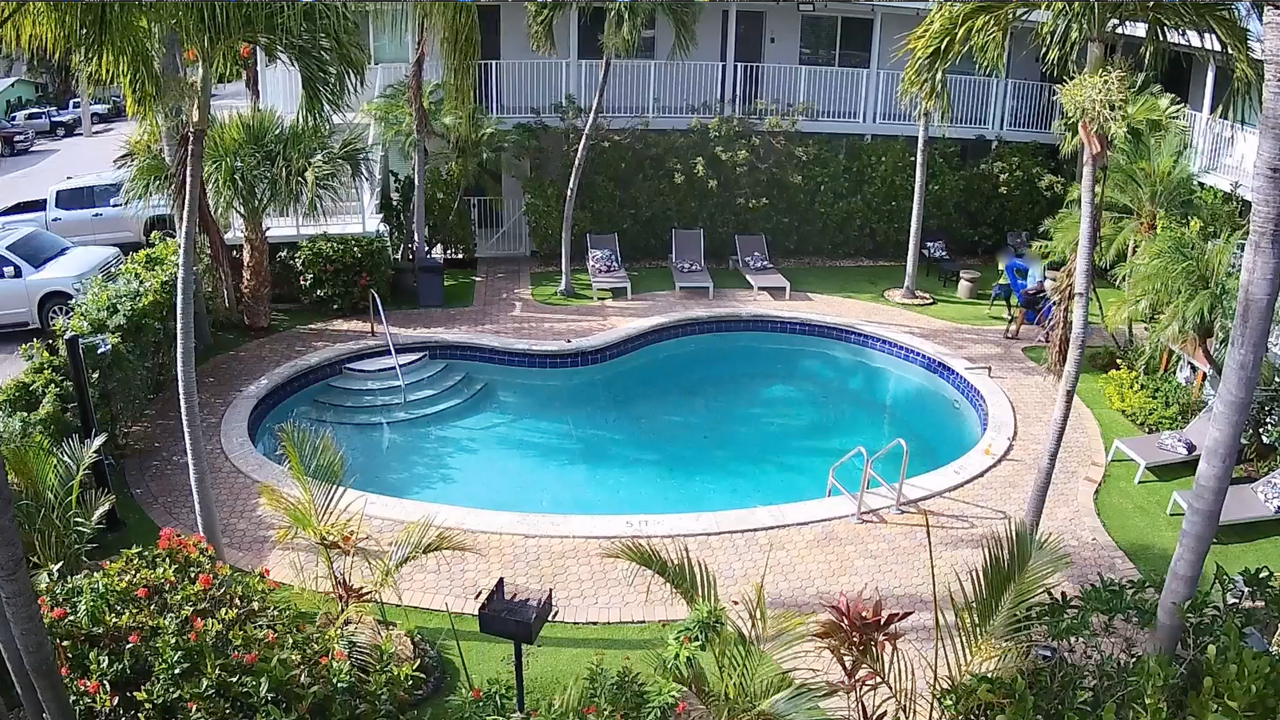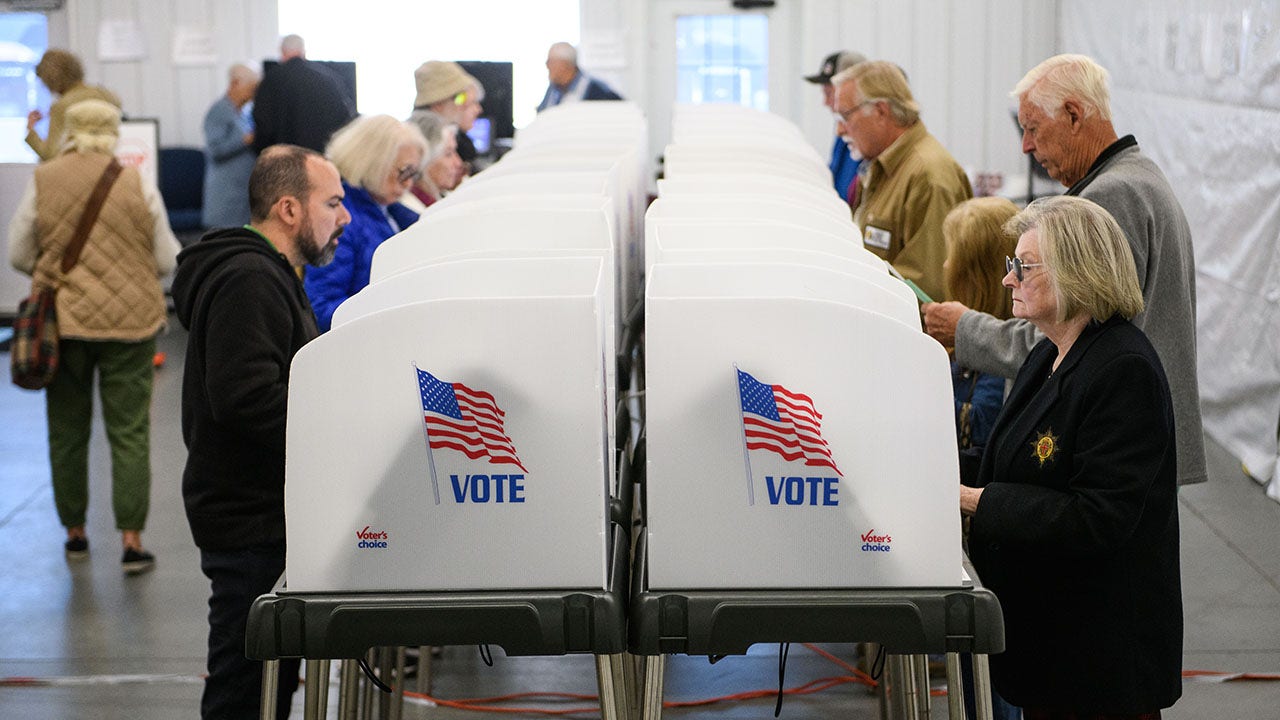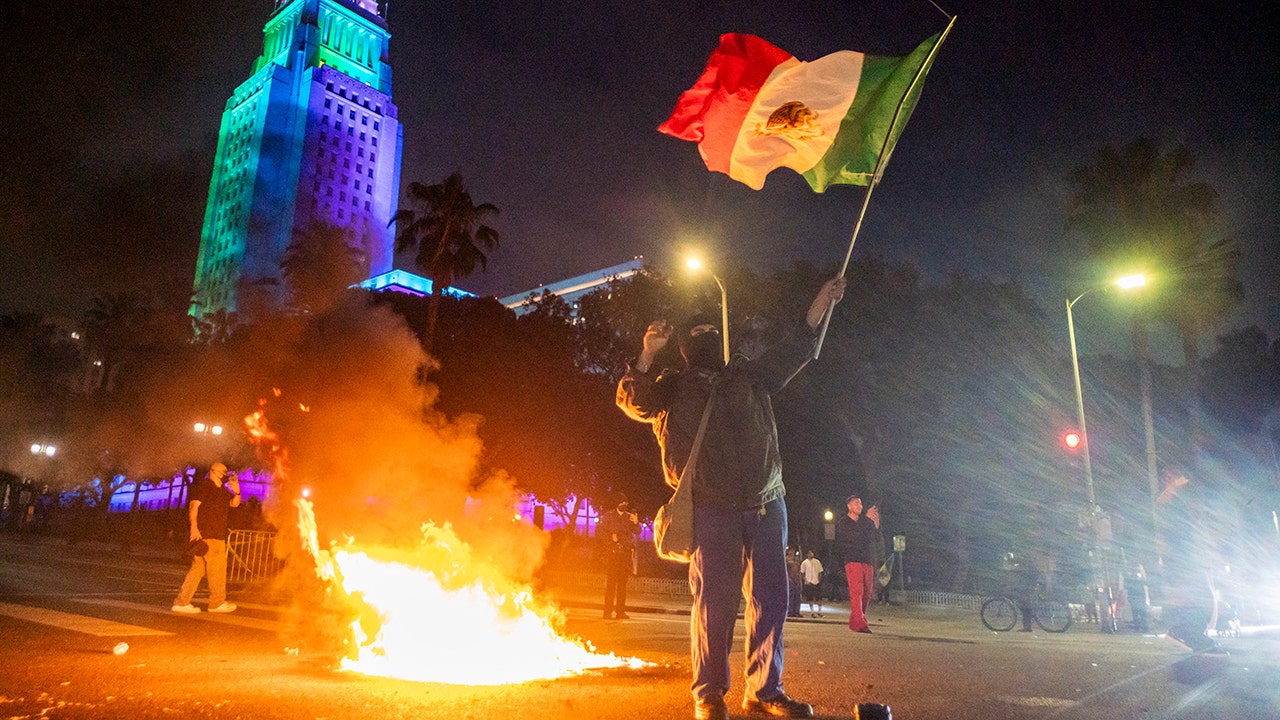Florida
DeSantis signs bill that will provide $20 million in compensation to Dozier School for Boys victims • Florida Phoenix

Gov. Ron DeSantis has approved a measure that will finally provide reparations for hundreds of men who as children were beaten and raped for decades while in the custody of the state.
The law (HB 21) signed by the governor on Friday morning will divide $20 million in compensation between those who attended the Arthur G. Dozier School for Boys in North Florida between 1940 and 1975, as well as the Okeechobee School, another state-based institution known for its abusive nature.
According to a bill analysis, there were reports of children being chained to walls in irons, brutal whippings, and peonage at Dozier as early as 1901. In the first 13 years of operation, six state-led investigations took place. After former Dozier School students began to publish accounts of the abuse, their complaints gained traction.
Ultimately, then-Gov. Charlie Crist in 2008 directed the Florida Department of Law Enforcement to investigate the Dozier School and the deaths alleged there.
Meanwhile, the school was closed following a federal investigation in 2011 and lawmakers gave a formal apology to the survivors in 2017.
Over those years, some of the still-living victims of rape and physical beatings by officers repeatedly made their way to Tallahassee to tell state lawmakers about the horrors suffered at those state-run institutions. They’ve been dubbed “the White House Boys” for the building on the Dozier campus in Marianna where boys were — among other abuse — beaten with a leather strap attached to a wooden handle.
Retired Army Ranger Capt. Bryant Middleton was one of those victims who made the trek to Tallahassee for years. Earlier this year, he told a state Senate committee not to think of him as the man in his late 70s, but as a young boy decades ago, when he and other boys endured abuse at the Dozier School.
“I would ask you: If it were your child that came home from school, your child said to you, ‘They took me to a room and beat me with a paddle.’ Your daughter comes home and says, ‘They took me into a room and they did something to me that made me uncomfortable.’ That’s what we endured,” he said.
“We were children”

“We were children. Don’t look at me as an adult. Think of me as a young child being beaten and molested and tormented, day in and day out. That’s what the school was really about. The beatings? We got over those. Those children that were raped at the age 6 and 7 and 8 — I don’t think they over got over that.”
Somewhat surprisingly, the governor’s office invited no news reporters or cameras to the bill signing, although about 15 of the men who have regularly visited the Legislature to lobby for the measure were there, along with the legislators who sponsored the measure — St. Petersburg state Sen. Darryl Rouson and House Republicans Michele Salzman from the Panhandle area and Kiyan Michael from Jacksonville.
“It came down to a crunch, you know, the final tranche of bills, and I know he has a very busy schedule,” Rouson said. “The important thing was to get it signed, and that’s what happened.”
The bill is set to go into effect on July 1. Applications for individuals eligible for compensation will go to the state Department of Legal Affairs, which will review and approve or deny applications.

Applications accepted through year’s end
The law says that only those who were confined to the Dozier School for Boys or the Okeechobee School between 1940 and 1975 are eligible; personal representatives or estates of those who attended the school but have died “may not file an application for or receive compensation” the law says. Applications will be accepted until Dec. 31 of this year.
Although it has been frequently mentioned that there are approximately 400 living survivors of the two institutions who are eligible to be compensated, one of the survivors, 80-year-old Tampa resident Gene Luker, told the Phoenix after the measure passed in the Florida Senate in March that he believes that far fewer than that are still alive.
“I don’t believe that,” he said at the time of the higher number. “I think if there’s around 100-150 from that time limit” — although he joked that more might “come out of the woodwork” now that it looks more possible than ever that the living victims will receive financial compensation.
After the measure passed out of a Senate committee in March, Broward County Democratic Sen. Rosalind Osgood approached one of the men who testified for the legislation.

“I’m deeply sorry for what happened to you,” Osgood said. “I know that no amount of money or no words can take away your pain, but I do want to tell you this morning that I love you. I love you. And I pray in the days to come that you will have at least a sense of peace and knowing that we care, and that we are doing the best we can to acknowledge that.”
Rouson has been pushing for the living victims at Dozier to be compensated for years. He said on Friday that he was “elated” after the governor signed the bill.
“It’s a poignant moment,” he said. “You can’t do anything about the 55 unmarked graves — individuals who we may never know. But we can do something about those still living, and who witnessed the trauma of beatings, disappearances, and injuries, both psychological and physical. It’s significant for them, and that’s why they showed up today.”

Florida
Surveillance video captures moment heroic stranger saves 6-year-old Florida boy sinking to bottom of pool

Stranger saves 6-year-old drowning boy from pool
6-year-old Oscar went underwater and struggled to breathe in Fort Lauderdale, Florida. Roque Ivan Ocampo heard the screaming and immediately rushed in to save Oscar’s life. (Credit: Fort Lauderdale Police Department)
NEWYou can now listen to Fox News articles!
A 6-year-old Florida boy who fell into a pool and started drowning was saved due to the quick-thinking heroics of a stranger – and it was all caught on camera.
Surveillance video shows the young boy, named Oscar, arrive at the pool in Fort Lauderdale with an adult.
He tries to jump onto a pool float, but loses his balance and falls into the pool.
The adult with Oscar begins screaming for help as the boy begins to sink to the bottom of the pool.
VIDEO CAPTURES DRAMATIC RESCUE OF FLORIDA MAN FOUND UNRESPONSIVE ON SPINNING BOAT
The pool where 6-year-old Oscar was saved by a stranger after slipping off of a pool raft and drowning. (Fort Lauderdale Police Department)
Roque Ivan Ocampo was passing by when he heard the screams for help and ran to assist.
As Ocampo quickly takes his shoes off, he dives right in to save Oscar.
HERO OFFICERS AND GOOD SAMARITANS WHO WENT ABOVE AND BEYOND IN 2024

Roque Ivan Ocampo jumped into the pool and grabbed the 6-year-old Oscar. Once out of the water, Ocampo began CPR. (Fort Lauderdale Police Department)
Ocampo immediately began pulling him to the surface of the water towards the ladder.
Another bystander assisted Ocampo with getting Oscar out of the water.
During a press conference, Ocampo told the media that he saw Oscar wasn’t breathing.
“I started doing CPR. The kid wasn’t breathing, but I keep doing it and doing it until he started breathing again,” Ocampo said.

Police find Oscar breathing upon arriving on scene due to Ocampo’s quick thinking. Oscar was carried to EMS and survived. (Fort Lauderdale Police Department)
Through police body cam footage, officers are seen arriving to find Oscar breathing.
The officers quickly took over and spoke to Oscar, asking him if he could squeeze their hand.
Officers then carry Oscar out of the pool area and to the paramedics.
CLICK HERE TO GET THE FOX NEWS APP
The 6-year-old survived because of the quick action taken by Ocampo.
“I don’t feel like a hero. I just did what I had to do. I feel good. I’m blessed to be able to help this kid,” Ocampo said to the media.
Nick Butler is a reporter for Fox News Digital. Do you have any tips? Reach out to Nick.Butler@Fox.com.
Florida
Man saves 6-year-old drowning in Florida pool

IE 11 is not supported. For an optimal experience visit our site on another browser.
-
Now Playing

Man saves 6-year-old drowning in Florida pool
02:04
-
UP NEXT

Families shaken as nationwide ICE raids escalate
01:09
-

Harvey Weinstein accuser speaks out after partial verdict
03:08
-

Musk apologizes to Trump after launching personal attacks
01:39
-

ICE’s immigration enforcement operations ramp up nationwide
01:53
-

Karen Read’s defense team rests case
01:39
-

Brian Wilson, leader of the Beach Boys, dies at age 82
02:26
-

Defense says Combs’ ‘hotel nights’ with ‘Jane’ were consensual encounters
02:43
-

Texas Governor Abbott says National Guard will respond to protests
00:57
-

Mayor Bass: Deploying troops to L.A. was ‘drastic and chaotic escalation’
01:45
-

Texas man accused of slipping abortion drug into girlfriend’s drink
02:18
-

Weinstein found guilty on one sexual assault count, not guilty on another
03:07
-

Rep. LaMonica McIver indicted on federal charges over clash with officers at ICE facility
00:51
-

Inflation in May rises by 2.4% year over year and 0.1% month over month
05:40
-

‘I can’t fight back’: Pregnant U.S. citizen hospitalized after ICE detention
02:06
-

Mikie Sherrill and Jack Ciattarelli win primaries in New Jersey governor’s race
00:37
-

Trump: Protesters at His Military Parade Will Face ‘Very Big Force’
03:00
-

Newsom Says ‘Democracy Is Under Assault’ in Address to Nation
03:20
-

Tulsi Gabbard speaks out against nuclear weapons
01:04
-

Family of man detained at work by ICE speaks out
09:10
NBC News NOW
-
Now Playing

Man saves 6-year-old drowning in Florida pool
02:04
-
UP NEXT

Families shaken as nationwide ICE raids escalate
01:09
-

Harvey Weinstein accuser speaks out after partial verdict
03:08
-

Musk apologizes to Trump after launching personal attacks
01:39
-

ICE’s immigration enforcement operations ramp up nationwide
01:53
-

Karen Read’s defense team rests case
01:39



NBC News NOW
Play All
Florida
Florida lawmakers agree to fully fund advanced education programs

TALLAHASSEE, Fla. – In a major breakthrough after months of debate, the U.S. House and Senate have reached an agreement to fully fund advanced education programs, including Advanced Placement (AP), International Baccalaureate (IB), and AICE courses.
The decision comes as a relief to students and educators across Florida, where more than 90 schools offer IB and similar programs to approximately 16,000 students each year.
But at Cypress Creek High School in Orange County, uncertainty remains. Despite the federal funding agreement, the IB program at Cypress Creek may not be offered next school year. The district cites a lack of interest as the reason for phasing out IB and replacing it with the AICE curriculum. However, students say they were left out of the decision-making process and dispute the district’s claims.
“Pre-IB was taken out of our school before IB was taken out, which means that students were not put in classes that are meant to prepare them for the IB program,” said Zoey Salah, a current Cypress Creek student. “This decision was already made before this, before we found out in May and before we could do anything about it.”
Students, staff and alumni, who organized a protest at the Ronald Blocker Educational Leadership Center, urged district officials to reconsider during a public comment of a Orange County Commision Board Meeting on Tuesday.
“I’m advocating for IB at Cypress Creek High School. Especially because of the opportunity you get to connect with other like-minded individuals academically. It really pushes you to do your best,” said Andres Rodriguez, a Cypress Creek IB alumnus.
If the IB program is eliminated, the nearest high school offering it is 20 miles away, a distance that could put the program out of reach for many Cypress Creek families.
While both IB and AICE are recognized by colleges nationwide, IB is often seen as offering more opportunities, especially for students aiming to study abroad for higher education.
“Especially those who are seeking higher education, like out of state or internationally, that is a huge loss of opportunity for them,” Rodriguez said. “Not just like, oh, this class is a college-level class, or you get college credit from it, you truly do some college-level research—it’s true prep in my opinion.”
As the district weighs its options, Cypress Creek students and supporters say they will continue to fight for a program they believe changes lives.
Copyright 2025 by WKMG ClickOrlando – All rights reserved.
-

 West6 days ago
West6 days agoBattle over Space Command HQ location heats up as lawmakers press new Air Force secretary
-

 Alaska1 week ago
Alaska1 week agoInterior Plans to Rescind Drilling Ban in Alaska’s National Petroleum Reserve
-

 World1 week ago
World1 week agoTwo suspected Ugandan rebels killed in Kampala explosion
-

 Politics1 week ago
Politics1 week agoRed state tops annual Heritage Foundation scorecard for strongest election integrity: 'Hard to cheat'
-

 Technology6 days ago
Technology6 days agoiFixit says the Switch 2 is even harder to repair than the original
-

 Movie Reviews1 week ago
Movie Reviews1 week agoParvulos: Children of the Apocalypse: Mexican horror movie may be the best of the year
-

 News1 week ago
News1 week agoStabilizing 'operations,' the National Weather Service hires again after Trump cuts
-

 World1 week ago
World1 week agoEU-Ukraine trade reset: What comes after tariff-free access expires?






















